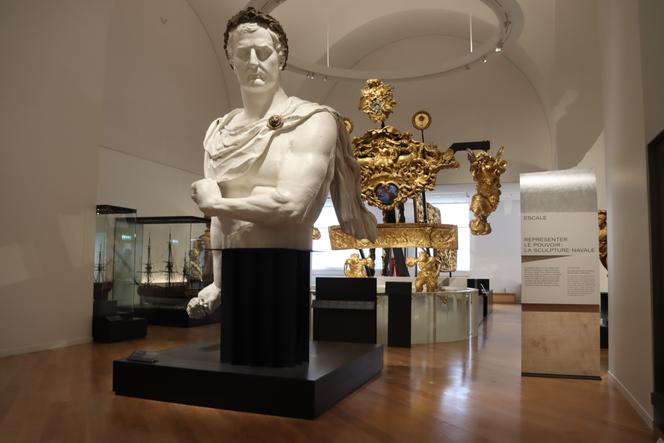


On Friday, November 17, an imposing cultural vessel moored at the Palais de Chaillot in Paris's 16th arrondissement reopened its doors to the public. Closed for renovation in 2017, the National Marine Museum received a facelift following the major work that gave this old institution a new lease on life. The colossal project was launched in 2012 by then-defense minister Jean-Yves Le Drian for the cost of €72.2 million. It was a chance to redesign the entire visitor's experience and restore the collections. More than a thousand works, most of which were refreshed in the museum's restoration workshop in Dugny, northeast of Paris, were brought back to the permanent galleries. A temporary exhibition space was also added and the museum's route was thoroughly revamped to attract younger visitors.
The new tour opens with a curious block of steel, straight out of a Jules Verne novel. This is the diving suit patented in 1882 by French inventors Alphonse and Théodore Carmagnolle. The suit was originally intended for underwater exploration but was never used because of its leakiness and weight (380 kilos). The object was eventually given to the museum in 1939, and its imposing stature now welcomes visitors.
Its position at the entrance is no accident, as the museum identified public interest in this strange 19th-century relic during "user committees" organized to test its new mediation devices. Designed in collaboration with the British agency Casson Mann, the scenography puts the visitor experience at the heart of its five thematic spaces.
It's hardly surprising, then, that pride of place was given to a collection of sumptuous figureheads, symbols of naval sculpture and royal power, such as the gilded ornaments on La Réale, built in honor of King Louis XIV. Classically, a myriad of ship models, paintings, photos, cabin reconstructions and crew objects outline in the tour's last section the history of the French navy, which is closely linked to improvements in shipbuilding. From ancient sailing ships to nuclear-powered aircraft carriers, The models on display illustrate these technical developments.

Le Royal Louis, l'Artésien, le Sphynx... The famous ship models that are the pride of the museum have also been restored. The museum's origin lies in this collection, which has always been its figurehead. In 1748, Henri Louis Duhamel du Monceau, who was inspector general of the navy, donated it to King Louis XV. They were first housed in the Louvre, then at the Palais de Chaillot in 1937 for the International Exhibition.
You have 50% of this article left to read. The rest is for subscribers only.
